Special Missions of the Maritime Self-Defense Force] Photo Report on “10 Days of Tense Close Contact” in the Indo-Pacific
The destroyer "Izumo" leads the "Samidare" in joint training with other navies--Check on China!

The destroyer “Izumo,” the largest in the Maritime Self-Defense Force and characterized by its carrier-shaped hull, led the destroyer “Samidare” as the two ships sailed through the South China Sea.
The author departed from the Izumo in an SH-60K helicopter aboard the destroyer to cover the start of a tactical drill, and was taking photos of the drill from above when he noticed the shadow of one of the ships approaching the MSDF fleet. As the distance between the two ships gradually closed, the shadow of one ship approached the MSDF fleet.
As it gradually closed the distance, the unidentified warship came within 20 miles (37 km) of the Izumo and began to run alongside.
The helicopter left the MSDF fleet and headed for confirmation. Tension flared in the cabin.
In the backlight, a “mysterious warship” was sighted. It was neither a naval vessel of the Maritime Self-Defense Force nor one of its ally, the U.S. Navy, but the Chinese Navy’s Type 054A frigate “Huangshan.
The South China Sea is undeniably the high seas.
However, China claims most of it as its own territorial waters. It has reclaimed land at seven points, including Scarborough Reef, and built radar facilities, ports, government buildings, and airstrips.
Vessels navigating the South China Sea, including but not limited to warships, are subject to the unspoken vigilance of the Chinese Navy. Sometimes they obstruct their course or otherwise try to eliminate them. On this very day, the naval fleet, which was subjected to such vigilance monitoring, continued its voyage as scheduled, as is its natural right. They decided to ignore the provocation. The Chinese side then continued alongside on the same course and at the same speed. This stalking continued until they approached Philippine territorial waters.
On May 31, the destroyer Izumo departed from its home port, Yokosuka Air Base. It departed on a long voyage around the Pacific Ocean. She was to embark on a four-month long special mission called the “Indo-Pacific Dispatch” (IPD).
The purpose of this long voyage is to check China’s hegemonic maritime expansion. Although not generally known to the public, the IPD has been conducted annually since 2005.
This year’s IPD was centered on Australia, with several vessels touring Papua New Guinea, Palau, and other countries. The author accompanied the ship from Darwin, Australia, to Manila, Philippines, for about 10 days.
The “Izumo” has a crew of about 450, each of whom is responsible for his or her own job, including the navigation department, which operates the ship; the engine department, which controls engines, electricity, and fresh water; and the flight department, which operates the aircraft.
The Izumo is characterized by its high aircraft operation capability. It can carry up to 14 helicopters. This year, the ship will undergo a major upgrade to be able to carry the F-35B stealth fighter jet, which is capable of short takeoffs and vertical landings. It is in the process of being transformed from a destroyer to an aircraft carrier.
The ship is also expected to carry Ground Self-Defense Force personnel, with the aim of operating the Izumo as a flagship for amphibious warfare. About 15 members of the Amphibious Task Force, the “Japanese version of the Marine Corps,” were on board the IPD this time. The commanding officer, First Lieutenant Yasumoto, said, “We are strengthening cooperation with the Maritime Self-Defense Force.
We are on board to fulfill two purposes: to strengthen cooperation with the Maritime Self-Defense Force and to cultivate seamanship. Most of the crew, including myself, have never been on a long voyage before. I want to know firsthand what life on the ship is like.”
Chief Warrant Officer Narita, the only woman on board the JGSDF, showed her white teeth and said, “There are many female JGSDF officers on the Izumo, and it took me a while to get used to them.
Indeed, among the naval vessels of the Japan Maritime Self-Defense Force, the “Izumo” has about 40 female SDF officers. One of them is First Sgt. Saito, a medic who works in the medical section of the ship. She joined the ship with the intention of becoming a pilot, but when she became ill, she admired the kindness of the female medics who took care of her and became certified as a registered nurse. She told the writer, “Because there are so many female SDF officers in the workplace, I want to be there for their emotional problems and anxieties.
The Izumo has excellent food, and I heard comments here and there throughout the ship that the food was “better than any other ship I have ever been on. The “chef de cuisine,” Chief Master Sergeant Sugawara, is a veteran of eight vessels he has sailed on.
He said, “On a long voyage, in addition to nutritional balance, it is important to have a menu that you never get tired of. The crew was surprised that they could eat this. I try day and night to come up with a menu that will surprise the crew.
Even so, the most popular dish is curry,” Chief Sugawara laughed.
While the IPD offers a fulfilling onboard life, training is also conducted. In addition to combat training on the ship, plenty of time is also spent training with the “Samidare,” the ship’s companion vessel. Prior to the ship’s arrival in the Philippines, joint Japan-Australia-U.S.-Philippines drills were also conducted. The exercise demonstrated to the world the determination of the two friendly nations to strengthen their ties and build peace and stability in the Indo-Pacific region.
For Japan, which depends on the Middle East for oil and other energy resources, a blockade of the Indo-Pacific region by China would be a matter of life and death. To protect Japan, special missions continue unnoticed.
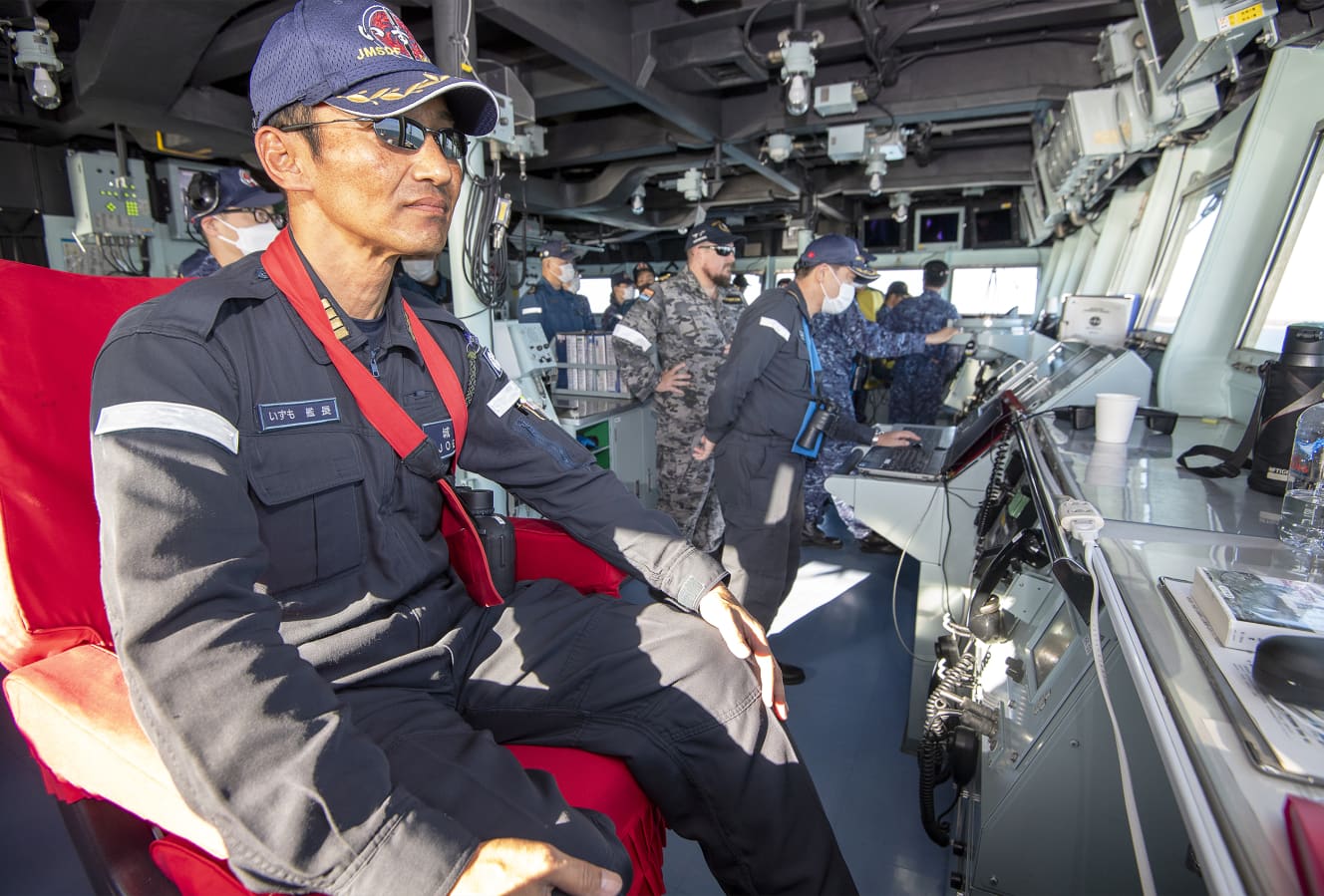
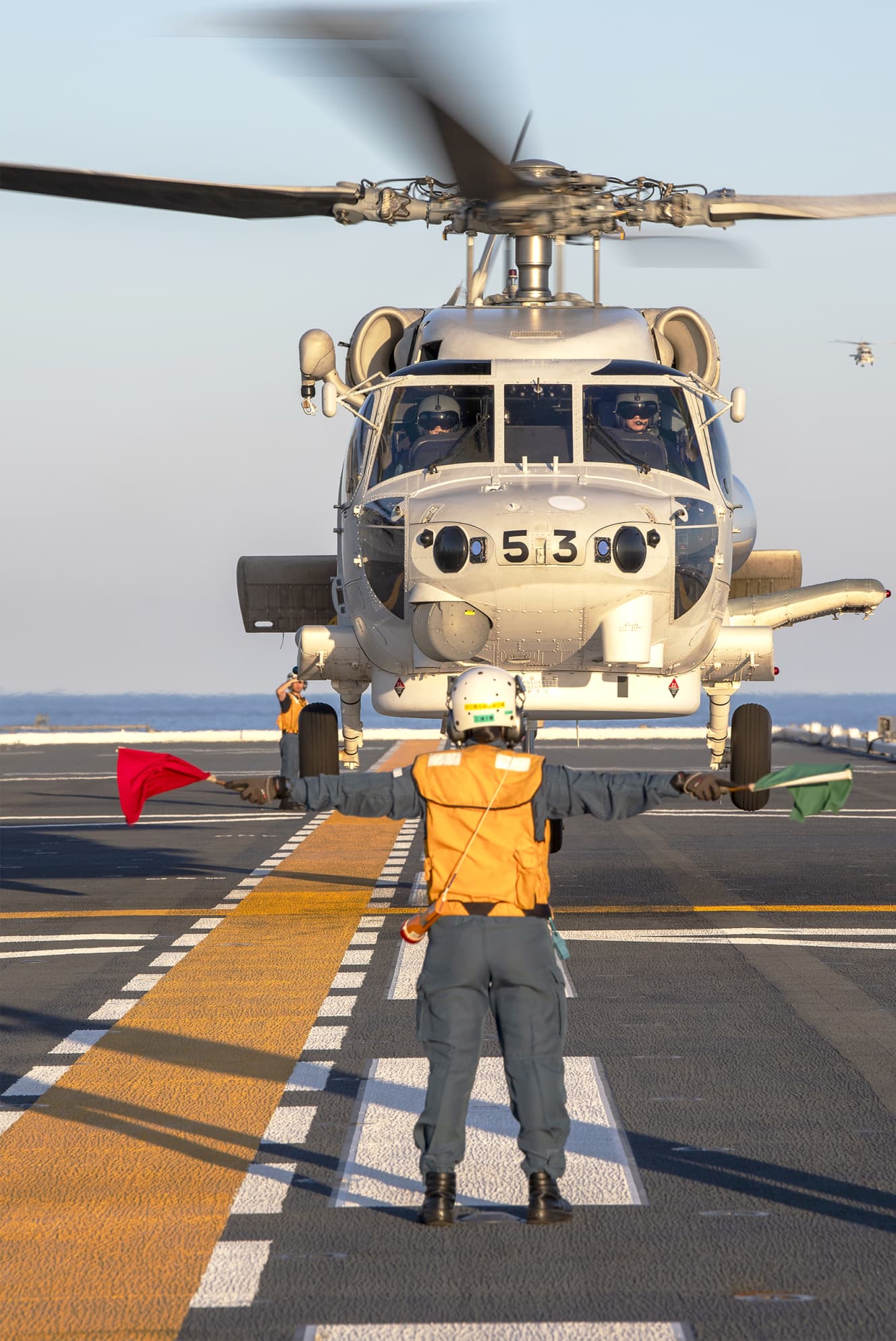


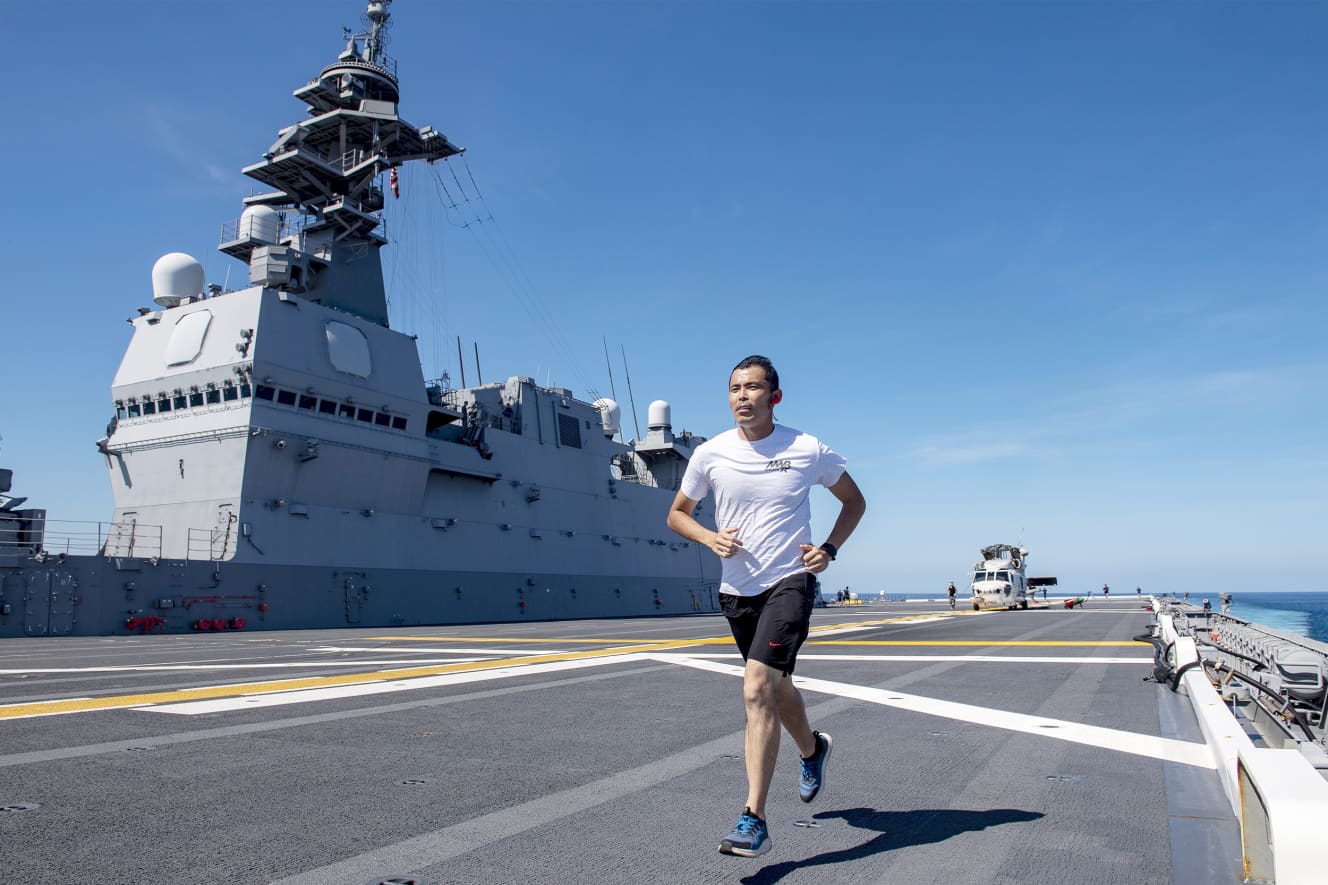
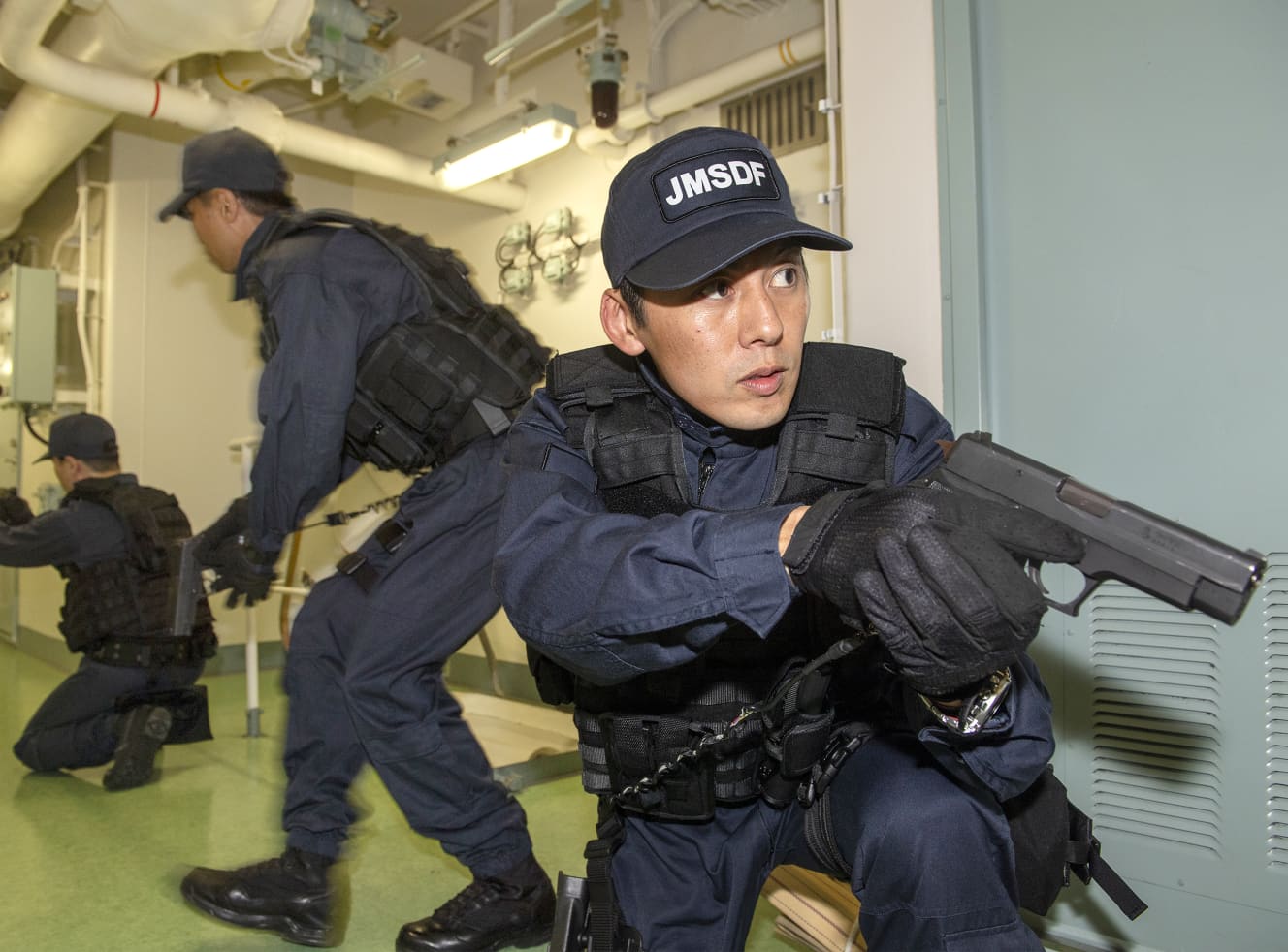
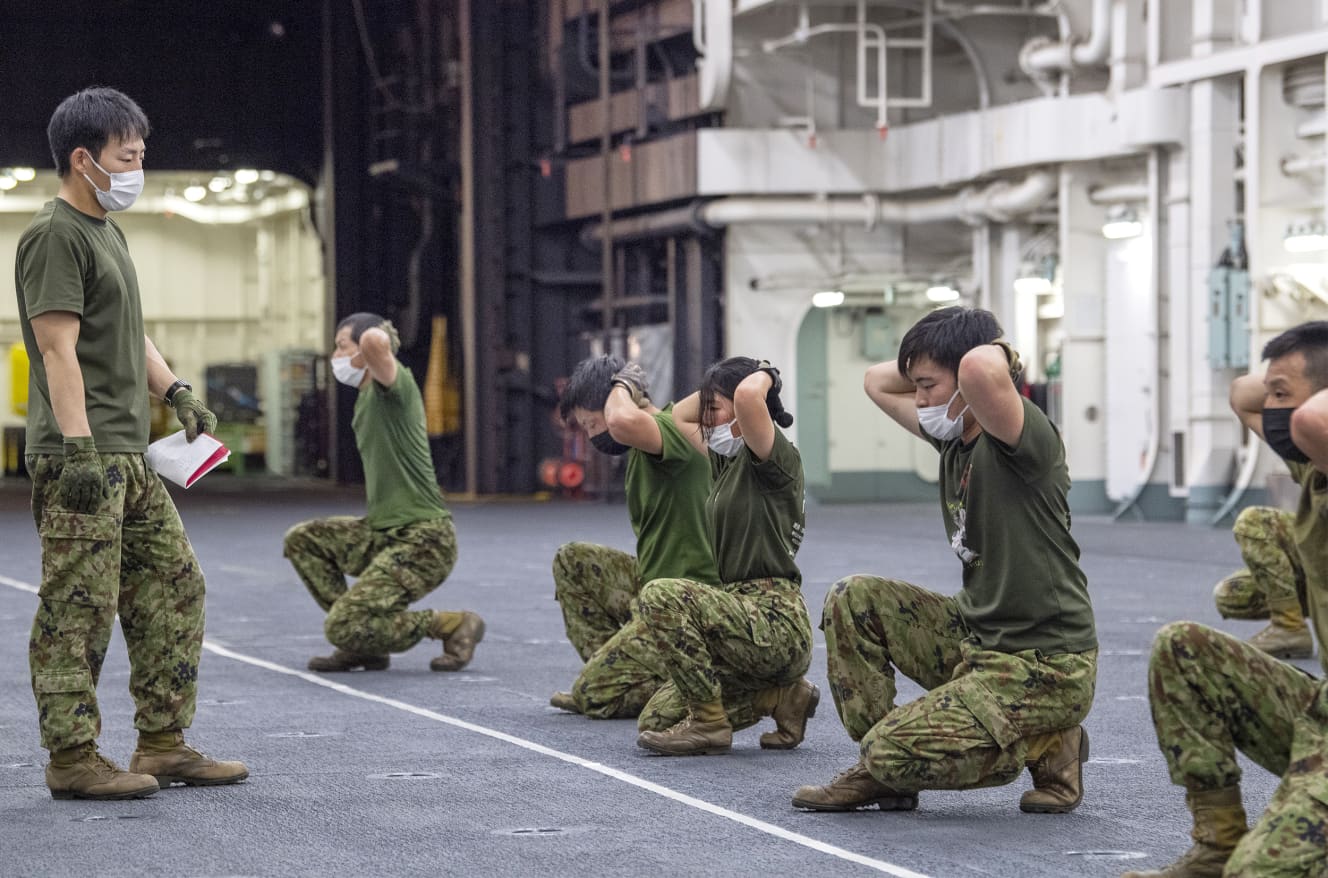

Masayuki Kikuchi was born in Tokyo in 1975. He has covered the Self-Defense Forces as well as the military of various countries. He is the author of the photo book “Riku-Ji Danshi” (Cosmic Publishing) and the book “Why Only the Self-Defense Forces Can Save People” (Ushio Shobo Kohjin Shinsha), as well as a military supervisor for manga and anime.
From the October 13-20, 2023 issue of FRIDAY
Photography and text by: Masayuki Kikuchi (military journalist)